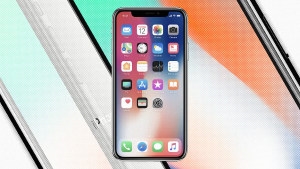The iPhone X Is An Engineering Marvel, But It’s Not A Reinvention Of The Smartphone
When I first heard about the $1,000 price tag of the forthcoming iPhone X from a trusted source back in February, the news came with a lot of other information about the slew of new components and features that would go in the phone. Some of those things, I was told, would be expensive to Apple, explaining the high price tag. Still, it sounded like it might be worth it.
That’s because it sounded like I was hearing about a completely new kind of device being prepared for the 10th anniversary of the iPhone–one that would reimagine smartphones and the way we use them.
That may have been expecting too much. Apple is touting the new iPhone X as “the future of the smartphone,” but after getting some hands-on time with the phone Tuesday, I’m not sure that label quite fits.
Before the announcement, we’d heard a lot about the new laser and sensor technology that would be built into the X. The information seemed to suggest Apple might lean on augmented reality and related technologies to a create dramatically new ways of using the phone.
Back in June, the release of the ARKit development tools for augmented reality experiences seemed to be another tantalizing clue that the iPhone X might go large on the new technology.
But it really didn’t.
I thought Apple would spend a good deal of time demonstrating an array of new apps and games that exploited new AR powers in the iPhone X. But the focus at the Steve Jobs Theater on Tuesday remained almost entirely on the hardware. We saw only one full AR demonstration–created by Apple itself–running on iPads in the Visitor Center after the event.
The iPhone X carries no new 3D sensing or room-mapping technology on its back to make AR experiences (created with ARKit) more believable. I’m confident Apple is working on such technology, but it decided, for one reason or another, not to put it in this year’s phone.
As it turned out, the 3D laser and sensor technology we’d heard about were used only on the front of the iPhone X for the new Face ID authentication method, and for the new Animoji in Messages.
Not An AR Phone
ARKit was designed to let developers create AR experiences for a large number of iPhones already out in the wild. ARKit experiences will work on any iPhone with the A9 chip or later, requiring only a single camera for spatial mapping. The consequence of that, however, is that ARKit can place digital objects at points in relation to horizontal planes, but it can’t track 3D objects moving through a space.
Apple may have wanted to standardize the ARKit tools for the creation of AR that relies only on regular cameras for tracking. It may have been too early in the life of ARKit to start supporting new tracking or room-mapping technology.
At any rate, AR for iPhone was mostly a no-show Tuesday. It was not presented as the thing that would change the way we use iPhones. It’s questionable that AR, in it’s current hold-the-phone-in-front-of-your-face form, is even good enough to become a central feature of an iPhone. It’s not a great experience in real life. We may have to wait until those AR glasses are ready to fully appreciate AR.
We saw a very impressive smartphone on Tuesday, to be sure. The new OLED display is impressive, and the way the glass on the front of the phone bends down into the stainless-steel sides is gorgeous. The new facial recognition for authentication works better than other such systems I’ve seen in phones. The camera system for shooting high-quality photos and videos is impressive, as are the new portraiture effects.
But all the new innovations, taken together, didn’t seem to create a sum bigger than their parts. How is this new phone more than just Apple’s answer to Samsung’s newest premium phones?
A Mainstream Device?
For many consumers, the question is whether the improvements are worth paying several hundred more dollars, and having to wait through supply shortages to pay it.
“You’re not going to see a lot of people dropping their [Samsung] Galaxy phones to switch to this,” says Ronald Goodstein, a professor at Georgetown’s McDonough School of Business. “For all the new features Apple added, the new phone is not going to be a mainstream consumer product.”
“It will be the Apple user base who buy the phone,” Goodstein adds. “Or it’s going to be the supercools who have to have the latest tech who will buy it–it gives them status, so they go after the most modern thing out there.”
In the United States, where Apple brand loyalty is very high, the iPhone X has perhaps the best chance at mainstream success. But, as Moor Insights & Strategy analyst Patrick Moorhead points out, people in countries like Germany and Japan don’t share that same brand loyalty. In those markets, the iPhone X will have to compete purely on price and features.
I truly appreciate the design, choice of materials, and engineering of the X. Apple’s engineers, after struggling with the problem for months, deftly designed the physical home button out of the phone. They found a way to wrap the whole front of the phone in beautiful and power-efficient OLED display. They seem to have made a facial-recognition system that’s both fast and secure. So big props for that.
But those things represent improvements to existing benefits of the iPhone, not the creation of whole new ones. What I saw and touched on Tuesday was a very good smartphone of the present, but not my idea of the smartphone of the future.
Of course, this won’t be my final word on the iPhone X. A presentation and 20 minutes of hands-on time isn’t enough to pass a complete judgment. If I end up buying an iPhone X, I’ll certainly reevaluate my opinion and write again.
Fast Company , Read Full Story
(69)













